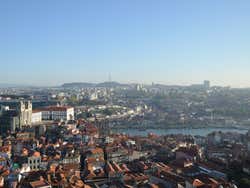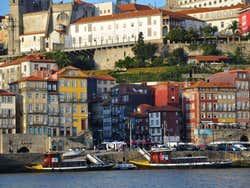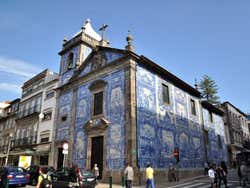
History of Porto
Porto, previously Cale, was a little Celtic hamlet located on the mouth of the Duero river. When the Romans added a port, "Portus Cale", it not only gave its name to the Porto of today but the nation of Portugal.
Porto is the second-largest city in Portugal, after Lisbon, and the name “Porto” itself influenced the name of the country “Portugal”.
In 456, it was invaded by Theodoric II, King of the Visigoths, who remained in their power until 716, when it fell under the Moorish Muslim invasion.
Alfonso III of Asturias fought against the Muslims and conquered Portus Cale in 868. In the subsequent years, Portugal emerged as a political entity.
In 1096, King Alfonso VI of Castile married off his daughter Teresa of León to Henry of Burgundy and as a dowry gave Henry the County of Portugal, with Porto being capital of the county at this time.
Portugal's independence
Afonso Enríquez, son of Henry of Burgundy and Teresa of León, defeated the King of León in 1139 and established a new kingdom from the southern part of the Kingdom of Galicia. This is the base for Portugal’s independence.
Five years later, in 1143, Afonso Enríquez was recognized as the first King of Portugal by King Alfonso VII of León.
In 1383 the city of Porto supported the uprising of the Grand Master of the Order of Avis, the future King John I of Portugal, against the Castilians who were besieging Lisbon.
John I of Portugal was proclaimed King in 1387 and two years later married Philippa of Lancaster, Henry III of England’s niece. After their marriage, both countries signed the Treaty of Windsor, the oldest military alliance between two countries. The King and Queen had several children, including Henry the Navigator in 1394.
Prince Henry became an important figure during the Portuguese Empire and lead the Age of Discoveries, travelling to Western Africa. Portugal slowly became an influential commercial centre and its ports, including Porto grew substantially. The city’s renowned shipyards made the vessels used by Henry the Navigator for his exploratory voyages.
Since 1415, Porto’s citizens are known as “tripeiros”, which literally means tripe eaters, as the best parts of the animals were given to the sailors that sailed to conquer Ceuta in North Africa and the city’s inhabitants were left with the off-cuts.
Spanish Porto
For 60 years, from 1580 to 1640, the history of Porto and all of Portugal was united with that of Spain to form the largest empire ever known.
Porto and most other major cities in Portugal opposed this union and in 1640, Porto backed the riot in Lisbon that would finally break the joining of the Peninsula.
Nevertheless, Porto benefitted from the Habsburg reign and grew both in size and stature. It gave way to Porto’s Golden Age during the eighteenth century.
In 1756, Porto rose against Sebastião José de Carvalho e Melo, first Marquis of Pombal, who wanted to create a British monopoly on Porto wines.
During the Napoleonic invasion, the Spanish occupied Porto in 1807. Two years later, in 1809, it was recovered by General Soult for the French.
In the 18th century, Porto's golden age, the city underwent a colossal change, filling with beautiful neoclassical and baroque buildings. The engine of the economic boom was due to the development of the industry associated with its famous wines.
Porto as a liberal and progressive city
Porto became a city recognized for its fight for civil rights and during the nineteenth century, important writers and poets lived in the city.
In 1820, a Liberal Revolution started in Porto demanding a constitutional monarchy in Portugal. After Miguel of Portugal took the throne, Porto rebelled against his absolutist rule and underwent an eighteen-month siege by the King’s army in 1832.
Porto was victorious and King Miguel abdicated due to the inhabitants’ numerous sacrifices, who heroically fought to defend the Constitutional Charter.
Leixões, one of the country’s major seaports, was constructed in 1890. This propelled the city’s economic growth and, at the beginning of the twentieth century, when the Republic was created in 1910, the city underwent many positive changes. An example of the urban development of this period is the city’s famous Avenida de los Aliados.
Twentieth-century Porto
In 1919, an attempt of independence from Lisbon, carried out by Paiva Couceiros, made Porto, provisionally, the capital of the North of Portugal. The immediate Republican reaction put an end to the uprising.
During the Salazar dictatorship, which lasted until the Carnation Revolution of 1974, infrastructures were greatly improved, with the construction of the Arrábida Bridge in 1963 standing out in Porto.
In 2001 Oporto was, together with Rotterdam, named the cultural capital of Europe and, in honor of the event, the striking auditorium "Casa da Música" was built in Boavista, a symbol of this capital.
Today Porto, economically speaking, is lagging behind Lisbon, although it still maintains its reputation as a hard-working, open, and welcoming city.


